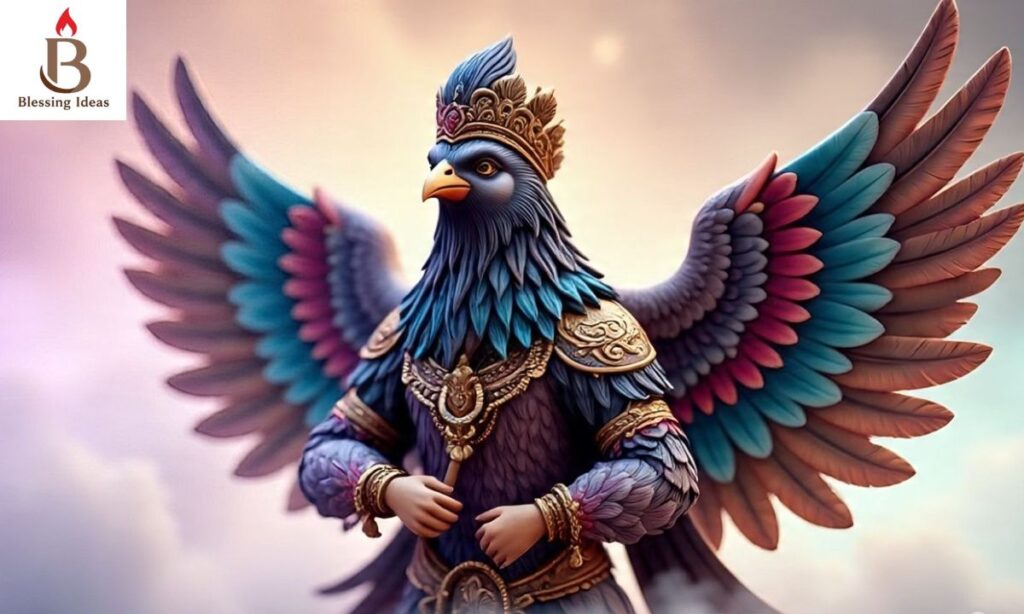Welcome! If you’ve ever seen the vibrant and colorful image of a rooster, or “El Gallo,” and wondered about its deeper meaning, you’re in the right place.
El Gallo is not just a bird; it’s a cultural icon that carries rich symbolism, historical significance, and a unique place in Latin American traditions. Whether you’re drawn to its role in folklore, its representation of courage, or its connection to celebrations, El Gallo’s impact continues to resonate strongly in 2025.
Literal Meaning of “El Gallo”
At its foundation, “El Gallo” is a straightforward translation—”The Rooster” in English. However, this simple term carries depths of meaning that extend far beyond its literal interpretation.
What Does “El Gallo” Mean?
In Spanish, “gallo” is the common term for a rooster or male chicken. It’s intrinsically linked with the crack of dawn, the morning crowing, and the herald of a new day.
In rural communities, roosters have been essential companions for centuries, serving as natural timepieces and symbols of vigilance and discipline. They represent reliability and the cyclical nature of life.
Phonetic Breakdown:
El Gallo: [el gah-yo]
The pronunciation varies slightly across Spanish-speaking regions, with some dialects emphasizing different syllables. While “el gallo” directly refers to the bird, it frequently carries deeper meanings that reflect various symbolic and cultural contexts throughout Latin America.
Symbolism and Cultural Significance of El Gallo
Roosters have held profound symbolic importance across cultures, particularly in Spanish-speaking communities. The term “El Gallo” transcends its literal animal reference, embodying values of strength, courage, and honor.
The Rooster as a Symbol of Strength and Courage
In Spanish culture, the rooster represents masculinity, power, and pride. The rooster’s dawn crowing signifies new beginnings, a call to action, and often a declaration of readiness for challenges.
Its natural role as a fighter adds to its symbolism of resilience and tenacity. The rooster stands tall, chest out, ready to defend its territory—qualities deeply admired in human character.
“El Gallo” in Folklore and Proverbs
The rooster features prominently in Spanish folklore and traditional sayings:
“El gallo que canta no pelea.” (The rooster that sings does not fight) – This proverb suggests that those who boast loudest are often least effective in action.
“Cuando el gallo canta, la hora está marcada.” (When the rooster crows, the hour is marked) – This emphasizes the rooster’s reliability as a timekeeper, symbolizing punctuality and natural order.
These phrases highlight the rooster’s connection to time, vigilance, and discipline in everyday life.
The Awakening of New Beginnings
The rooster’s crowing marks dawn’s arrival—a time of renewal and opportunity. In Mexican culture, the rooster represents hope and the promise of fresh starts, signaling that despite yesterday’s struggles, today brings new chances and clarity.
This symbolism makes El Gallo particularly meaningful during times of transition and personal growth.
“El Gallo” in Popular Culture
The term “El Gallo” enjoys prominence in music, literature, and media, especially within Latin American and Mexican cultures.
Music and Songs: The Rooster in Latin Music
One of the most celebrated songs featuring “El Gallo” is the iconic “El Gallo de Oro” (The Golden Rooster), a ranchera classic by the legendary Mexican singer Vicente Fernández.
The song’s lyrics portray a proud, unyielding character as fierce and spirited as the rooster itself. In this context, the rooster symbolizes a brave individual who faces challenges with confidence and pride.
Famous Lyrics from “El Gallo de Oro”:
“Yo soy el gallo de oro, el que no le teme a nadie.” (I am the golden rooster, the one who fears no one.)
In Spanish folk music and boleros, the rooster represents pride and fearlessness, serving as a metaphor for those unwavering in pursuing their goals.
“El Gallo” in Literature and Cinema
From Mexican cinema to literature, the rooster appears as a central figure in numerous works. In Mexican literature, the rooster represents not just nature, but community spirit and survival.
In cinema, particularly Mexican films, the rooster symbolizes heroism, courage, and resilience—themes that resonate deeply in storytelling traditions where struggle and survival are recurring motifs.
“El Gallo” in Mexican Cuisine
No exploration of “El Gallo” would be complete without examining its culinary significance. Roosters play important roles in traditional Mexican cooking beyond their symbolic meaning.
Rooster Dishes in Mexico
One of the most renowned dishes featuring rooster is Gallo en Mole, a traditional Mexican dish with rooster meat simmered in rich, flavorful mole sauce. This dish graces festive occasions and represents the hearty, robust flavors Mexican cuisine is celebrated for.
Gallo en Mole Recipe (Simplified):
Ingredients: Rooster meat, mole paste, chicken stock, onions, garlic, sesame seeds, and chocolate.
Preparation: The rooster is slow-cooked in deep, savory mole sauce made from roasted chiles, spices, and chocolate, creating a dish rich in flavor and history.
Festivals and Rooster Feasts
In rural Mexican regions, roosters are often prepared for large feasts during family gatherings and festivals. This culinary tradition connects to the rooster’s symbolism of fertility, strength, and prosperity.
El Gallo plays a significant role in these communal celebrations, where the bird is appreciated for both its flavor and cultural heritage representation.
El Gallo in Mexican Wrestling (Lucha Libre)
In Mexican wrestling (Lucha Libre), roosters serve as powerful metaphors for the fighters themselves.
Mascot and Symbol of Fighters
In Lucha Libre, wrestlers often adopt animal personas, and the rooster, with its fierce nature, is a popular choice for ring personas. The rooster represents characters who are courageous, combative, and always ready to fight, regardless of odds.
Iconography in Lucha Libre
Wrestlers like El Gallo or El Gallo Negro (The Black Rooster) embrace rooster symbolism in their masks, costumes, and personas. They portray themselves as proud, fearless characters, drawing inspiration from the animal’s natural resilience and dominance.
“El Gallo” as a Metaphor
Beyond its literal and symbolic roles, “El Gallo” serves as a powerful metaphor in everyday language and expressions.
The Rooster as a Fighter
In Spanish, calling someone “un gallo” means they are strong-willed and unafraid to face challenges. Like the rooster, they are seen as brave and ready to fight for their beliefs.
Popular Phrases and Idioms Involving “El Gallo”
“A gallear”: To act confidently or with pride, similar to how a rooster struts.
“Gallo de pelea”: A fighter, someone who doesn’t back down from challenges.
These phrases illustrate how the rooster, or “gallo,” describes someone with bravery, determination, and unwavering resolve.
El Gallo in Religion and Spirituality

The rooster carries significant meaning in Christianity and other religious contexts, making it a spiritually rich symbol.
The Rooster in Catholic Iconography
In the Catholic Church, the rooster is a well-known symbol. The most famous association comes from the biblical story of Peter’s denial of Christ.
According to the Gospel: “Before the rooster crows, you will deny me three times” (Matthew 26:34). After Peter denied Jesus three times, a rooster crowed, fulfilling Christ’s prophecy and signifying Peter’s betrayal and subsequent remorse.
Another biblical reference: “And immediately, while he was still speaking, the rooster crowed” (Mark 14:72), marking the moment of Peter’s realization of his denial.
Spiritual Significance of El Gallo
In various traditions, El Gallo symbolizes watchfulness and spiritual protection. It serves as a divine signal, alerting believers to moral clarity or spiritual awakening.
The rooster’s dawn crow represents spiritual awakening and the triumph of light over darkness, making it a powerful symbol of resurrection and renewal in Christian iconography.
The Role of “El Gallo” in Festivals and Traditions
Festivals celebrating El Gallo offer unique opportunities to explore the rooster’s symbolism in Mexican culture.
Festivals Honoring the Rooster
In certain regions, the “Día del Gallo” (Rooster Day) is celebrated, particularly in rural Mexico. Communities gather to honor the rooster through music, dance, and feasts, celebrating the bird’s important role in daily life and tradition.
Rooster Symbolism in Cultural Celebrations
Roosters feature prominently in decorations, rituals, and processions during cultural festivals. Their presence signifies strength, renewal, and connection to ancestral heritage.
These celebrations often include rooster-themed art, traditional dances mimicking rooster movements, and communal meals featuring rooster dishes.
Global Perspectives on “El Gallo”
While El Gallo is deeply rooted in Latin American culture, rooster symbolism transcends language and geographical borders.
Rooster Symbolism Worldwide
In various cultures, the rooster holds similar symbolic significance, though expressed differently:
In France: The rooster is the national emblem, symbolizing liberty, independence, and national pride.
In China: The rooster represents bravery in the Chinese zodiac, where the Year of the Rooster is associated with confidence, resourcefulness, and punctuality.
In Portugal: The “Galo de Barcelos” is a symbol of good luck and justice, featuring prominently in Portuguese folklore.
These global interpretations demonstrate the universal appeal of rooster symbolism across diverse cultures.
Conclusion
The meaning of “El Gallo” is remarkably rich, multifaceted, and deeply intertwined with the history, culture, and traditions of Spanish-speaking societies. From its humble role as a barnyard bird to its transformation into a symbol of courage, resilience, and new beginnings, “El Gallo” holds a place of honor in folk traditions, art, music, cuisine, and spirituality.
Whether you encounter “El Gallo” in a song, a traditional dish, or a local festival, its symbolism offers a window into the heart of Mexican and Latin American culture. In 2025, this timeless symbol continues to inspire and connect people to their heritage while representing universal human values of courage, renewal, and spiritual awakening.





